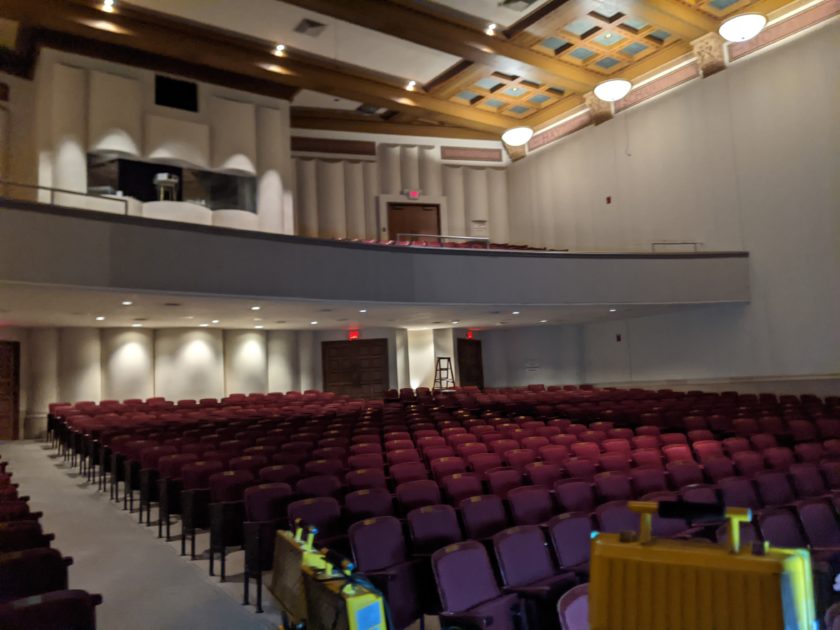For the past couple weeks, Facilities management have been battling mold and mildew spores inside of Mees Hall. This is one case of Facilities’ ongoing battle with mold, having had cases in 2018 and 2019.
Paul Matthews, the Director of Facilities Management, said the mold spores were caused by a change in humidity and temperature. The reason for this fluctuation in the environment inside of Mees was due to regulatory measures by the CDC, as well as local weather changes.
The CDC recommends that the venting system in the buildings around campus be open so that about 40% of the air in circulation inside the buildings is coming from outside.
The CDC has adopted this rule in response to COVID-19.
“The moisture in the air from the humidity makes the COVID particles heavy and fall to the ground faster, instead of floating,” Matthews said.
The temperature and humidity changed over the course of a weekend. This, coupled with the fact that Mees hall has been closed and dark from its lack of usage in previous years, led to the perfect breeding ground for mold and mildew.
The processes for cleaning and sanitizing Mees comes in multiple parts. The first is to kill all of the harmful mold and mildew. Facilities workers are doing this by using a tool called an ionization gun. This tool features a tank that is filled with a mixture called Penetrexx, which is sprayed into the air as an aerosol.

“It covers everything, so when we walk through here, Penetrexx goes and attaches to everything, that’s good for 30 days,” Matthews explains.
For example, if you touch something with your hand that has Penetrexx on it, all the bacteria on your hand should die.
This mist has been sprayed over the entirety of Mees multiple times, killing the mold and mildew.
The next step is to clean everything. The tools used for this are called Hepa Vacuums. These are different from the standard Hoover because as opposed to sucking debris in and then shooting air out, the Hepa Vacuums contain everything, including potentially harmful air particles.
On top of this, the stone walls that line the theatre were cleaned, as well as the chairs, armrests, and the metal frames that support them. The carpet walkways will be shampooed, likely by the end of the week of Sept. 28.

Matthews stated that Bipolar Plasma Ionization units have been installed throughout the conservatory which will help Facilities maintain better control over the environment inside Mees.
These are systems that use plasma and electricity to take hydrogen away from mold, mildew, and viruses, which is the element that they need in order to survive.
Of the 13 units installed on campus, the conservatory has several of them. This is due to the conservatory’s lack of operable windows, and the large amount of foot traffic that it receives.
“The other two buildings that are getting bipolar ionization are the student union because we have so many students in there all the time, and the law school because it has closed off windows,” Matthew says.
There was only a one day span between the reports of mold and the action taken by Facilities. At this time there have not been any reports of this happening in other buildings on campus.
“Every building has mold in it. It is the aspect of being able to control it,” Matthews continues.
He went on to say that the kind to watch out for is the black mold, which caused this issue in Mees.
Additionally, Steve Kinsinger, Associate Director of Plant Operations, explained the building automation system that helps keep tabs on all of this.
“It tells me how much we are cooling, heating, everything,” Kinsinger says.

Some ways that the student body can help mitigate these issues in their own rooms is to not put beds next to the radiators and air conditioning units, because that can stop the flow of air. Without air flow, mold is able to take root. Similarly, watch where you place cardboard, as that can act as a sponge and soak up moisture.
For further information regarding the mold in Mees, or for any further issues, please contact Paul Matthews at pmatthews@capital.edu.


